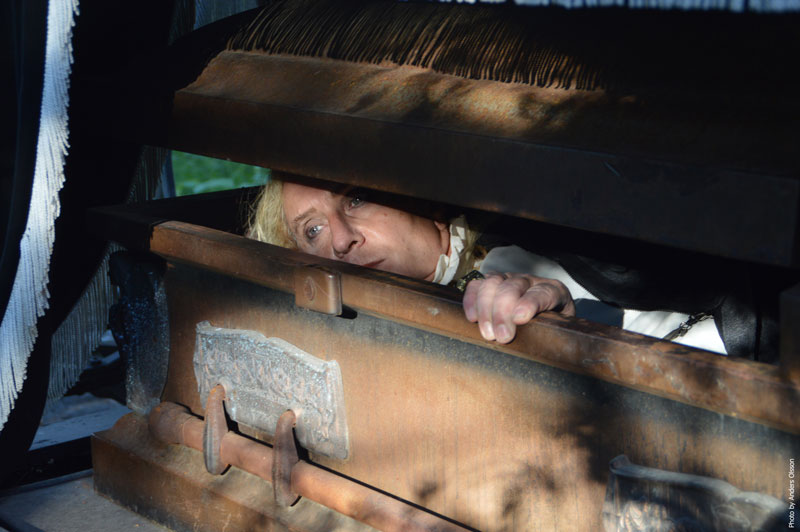- Article
- Read in 3 minutes
Nad Sylvan – Vampirate Trilogy – Epilogue
Ole Uhtenwoldt looks at the complete Vampirate trilogy. What is remarkable, which songs stand out? Find out…

We are left with many impressions from the journey this trilogy sent us on. All albums leave an impression, of course, each in their own way.
First there is the versatility we find in every track. Despite some outstanding single tracks such as I Am The Sea, Ship’s Cat or The Quartermaster they are all strong as a group. There is no song that demands a special role, they exist together and develop their strength in the musical context of the album. Even a long track such as To Turn The Other Side does not come across as hogging the album, it simply is part of the story. This is also true for the more chaotic The White Crown and Meet Your Maker. The new styles and sounds the trilogy keeps exploring advance the story while a handful of recurring leitmotivs make it more organic. The albums work independently from each other, but they are different enough to be an excellent triad. The title tracks are exemplary for their respective albums; in a way, they can be seen as their summaries.
The story is rather vague and leaves much space for personal interpretation by the listener. The Vampirate is never expressly mentioned (except in his anthem, Crime Of Passion), and Nad makes it quite a challenge for the listener to follow the action as it frequently remains obscure. This was his intention – leaving open all possible interpretations so every listener has to make sense of the story for themselves. This is the case with many concept albums, of course. By comparison, the plot of The Lamb Lies Down On Broadway is clearer and closer to a classical storyline. The Vampirate trilogy is perhaps easier to compare with the 2013 release Dimensionautby Sound Of Contact, a project by Simon Collins and Dave Kerzner. That story is similarly obscure. (Incidentally, Nad recorded a version of The Chamber Of 32 Doors for Kerzner before the sessions for Genesis Revisited II. Kerzner had noticed his voice and approached him, but (unfortunately) they did not work together. It was Winfried Völklein (of WiV Entertainment and The Night Of The Prog) suggested to Steve Hackett that he might want to check out Nad Sylvan as a possible singer for a tour with Genesis material in 2012. The rest is history…
The albums give off the surprising impression of a studio atmosphere, as if the musicians had become a band while they made these albums – not at all bad if you consider that much of the music was recorded in so many different places and mixed by Nad afterwards. Nad’s voice and its nuances develop well and become a crucial factor in the albums.
The compositions are fun and quite as complex as older Genesis tracks (also in terms of arrangement and instruments). The music works without permanent changes in speed or time signatures, without nervous semiquaver fills or extremely convoluted parts (though The White Crown manages that very well, too). All this proves once more how very colourful and varied everything is that comes from the Genesis camp with its extremely diversified output.
Nad is justly proud of all three albums and the fact that none sounds like the other. They take the listeners on a journey, which, after all, is what we expect from an album. The artwork for the bride (by Marcela Bolivar) was the starting point from which the concept developed and grew until it was defined as a trilogy. From a plethora of material Nad chose what he considered the strongest ideas – he did well.
And perhaps the Vampirate will return … the doors aren’t closed to that.
by Ole Uhtenwoldt (06/2019), English by Martin Klinkhardt

Sources:
https://www.loudersound.com/news/nad-sylvan-on-birth-of-the-vampirate
https://www.nadsylvan.com/the-bride-said-no
https://www.nadsylvan.com/courting-the-widow-2015
Booklet „Courting The Widow
Booklet „The Bride Said No“
Promo text „The Regal Bastard“
E-mail exchange with Nad Sylvan
